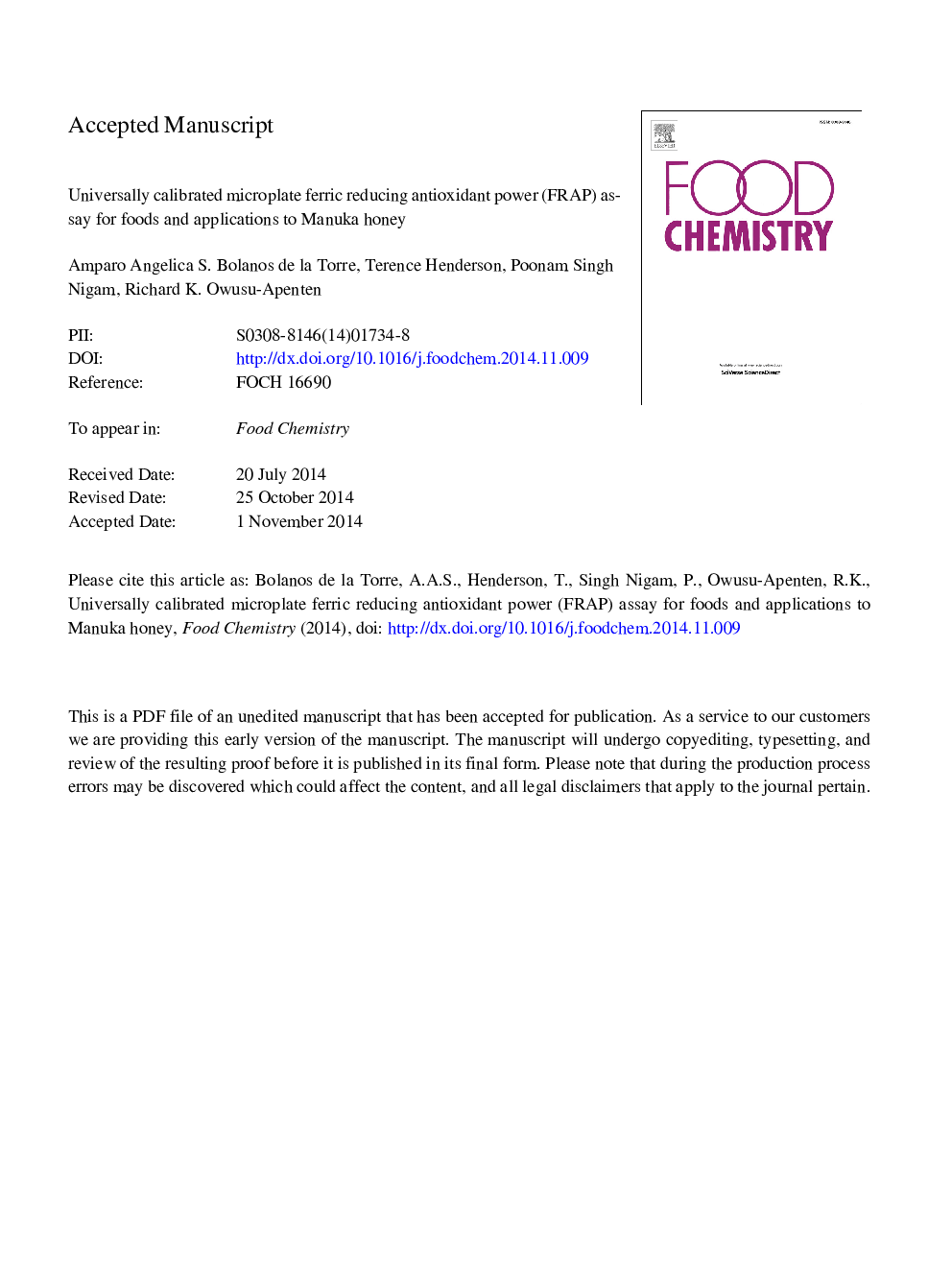| Article ID | Journal | Published Year | Pages | File Type |
|---|---|---|---|---|
| 7594501 | Food Chemistry | 2015 | 27 Pages |
Abstract
The ferric reducing antioxidant power (FRAP) assay was recently adapted to a microplate format. However, microplate-based FRAP (mFRAP) assays are affected by sample volume and composition. This work describes a calibration process for mFRAP assays which yields data free of volume effects. From the results, the molar absorptivity (ε) for the mFRAP assay was 141,698 Mâ1 cmâ1 for gallic acid, 49,328 Mâ1 cmâ1 for ascorbic acid, and 21,606 Mâ1 cmâ1 for ammonium ferrous sulphate. The significance of ε (Mâ1 cmâ1) is discussed in relation to mFRAP assay sensitivity, minimum detectable concentration, and the dimensionless FRAP-value. Gallic acid showed 6.6 mol of Fe2+ equivalents compared to 2.3 mol of Fe+2 equivalents for ascorbic acid. Application of the mFRAP assay to Manuka honey samples (rated 5+, 10+, 15+, and 18+ Unique Manuka Factor; UMF) showed that FRAP values (0.54-0.76 mmol Fe2+ per 100 g honey) were strongly correlated with UMF ratings (R2 = 0.977) and total phenols content (R2 = 0.982)whilst the UMF rating was correlated with the total phenols (R2 = 0.999). In conclusion, mFRAP assay results were successfully standardised to yield data corresponding to 1-cm spectrophotometer which is useful for quality assurance purposes. The antioxidant capacity of Manuka honey was found to be directly related to the UMF rating.
Keywords
Related Topics
Physical Sciences and Engineering
Chemistry
Analytical Chemistry
Authors
Amparo Angelica S. Bolanos de la Torre, Terence Henderson, Poonam Singh Nigam, Richard K. Owusu-Apenten,
